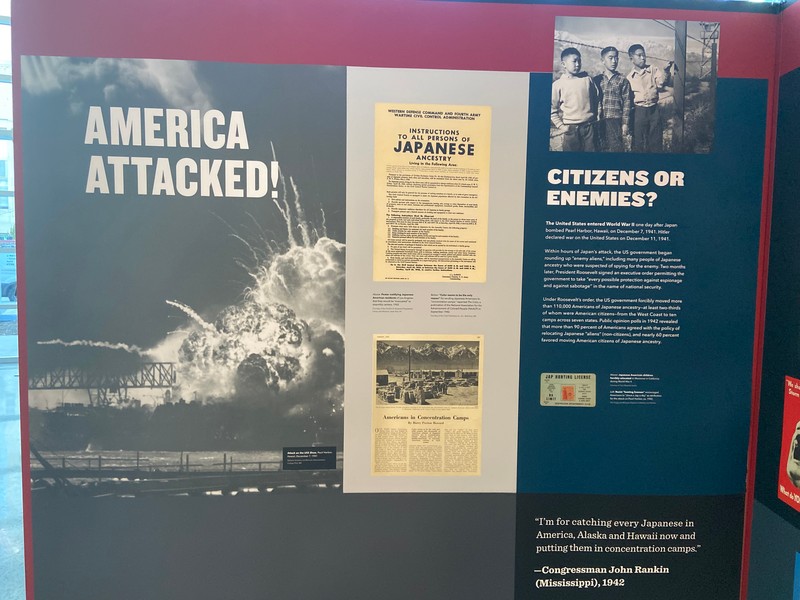America Attacked! (Americans and the Holocaust)
Introduction
Author-Uploaded Audio
Listen to a narration of this entry's description by Larry Johnson.
Text-to-speech Audio
Do you know what event ultimately led to US participation in World War II? It was the Japanese attack on Pearl Harbor, Hawaii, the morning of December 7, 1941, seen in this photo. After the attack, the United States declared war on Japan. Germany, which was aligned with Japan, declared war on the United States. So our country officially joined World War II. Only two months after the war began, President Roosevelt signed an Executive Order which led to the arrest and imprisonment of more than 110,000 Japanese and Japanese Americans in camps, claiming that this was necessary for America’s national security. Public opinion overwhelmingly supported this; this “Hunting License,” created and carried by people who supported the arrests, demonstrates American racism during the period. Again, we can see how Americans debateddebated this issue. Read the bolded quote from middle column of the NAACP article. In both the article and this statement by a congressman, these camps were called “concentration camps” at the time. That is still the term the National Parks Service and survivors of those
Images
America Attacked panel (Americans and the Holocaust)

Backstory and Context
Text-to-speech Audio
Metropolitan Library System is one of 50 U.S. libraries selected to host AMERICANS AND THE HOLOCAUST, a traveling exhibition from the U.S. Holocaust Memorial Museum that examines the motives, pressures, and fears that shaped Americans’ responses to Nazism, war, and genocide in Europe during the 1930s and 1940s.
The Americans and the Holocaust exhibit will be on display at the Downtown Library, along with a series of related special events from Thursday, January 5 to Sunday, February 12.
Based on extensive new research of that period, Americans and the Holocaust addresses important themes in American history, exploring the many factors — including the Great Depression, isolationism, xenophobia, racism, and antisemitism — that influenced decisions made by the U.S. government, the news media, organizations and individuals as they responded to Nazism. This exhibition will challenge the commonly held assumptions that Americans knew little and did nothing about the Nazi persecution and murder of Jews as the Holocaust unfolded.
Drawing on a remarkable collection of primary sources from the 1930s and ’40s, the exhibition focuses on the stories of individuals and groups of Americans who took action in response to Nazism. It will challenge visitors to consider the responsibilities and obstacles faced by individuals — from Franklin Delano Roosevelt to ordinary Americans — who made difficult choices, sought to effect change, and, in a few cases, took significant risks to help victims of Nazism even as rescue never became a government priority.
Americans and the Holocaust was made possible by the generous support of lead sponsor Jeannie & Jonathan Lavine. Additional major funding was provided by the Bildners — Joan & Allen z”l, Elisa Spungen & Rob, Nancy & Jim; and Jane and Daniel Och. The Museum's exhibitions are also supported by the Lester Robbins and Sheila Johnson Robbins Traveling and Special Exhibitions Fund, established in 1990.
Sources
United States Holocaust Memorial Museum. Accessed January 5th, 2023. https://www.ushmm.org/.
American Library Association. Accessed January 5th, 2023. https://www.ala.org/.
